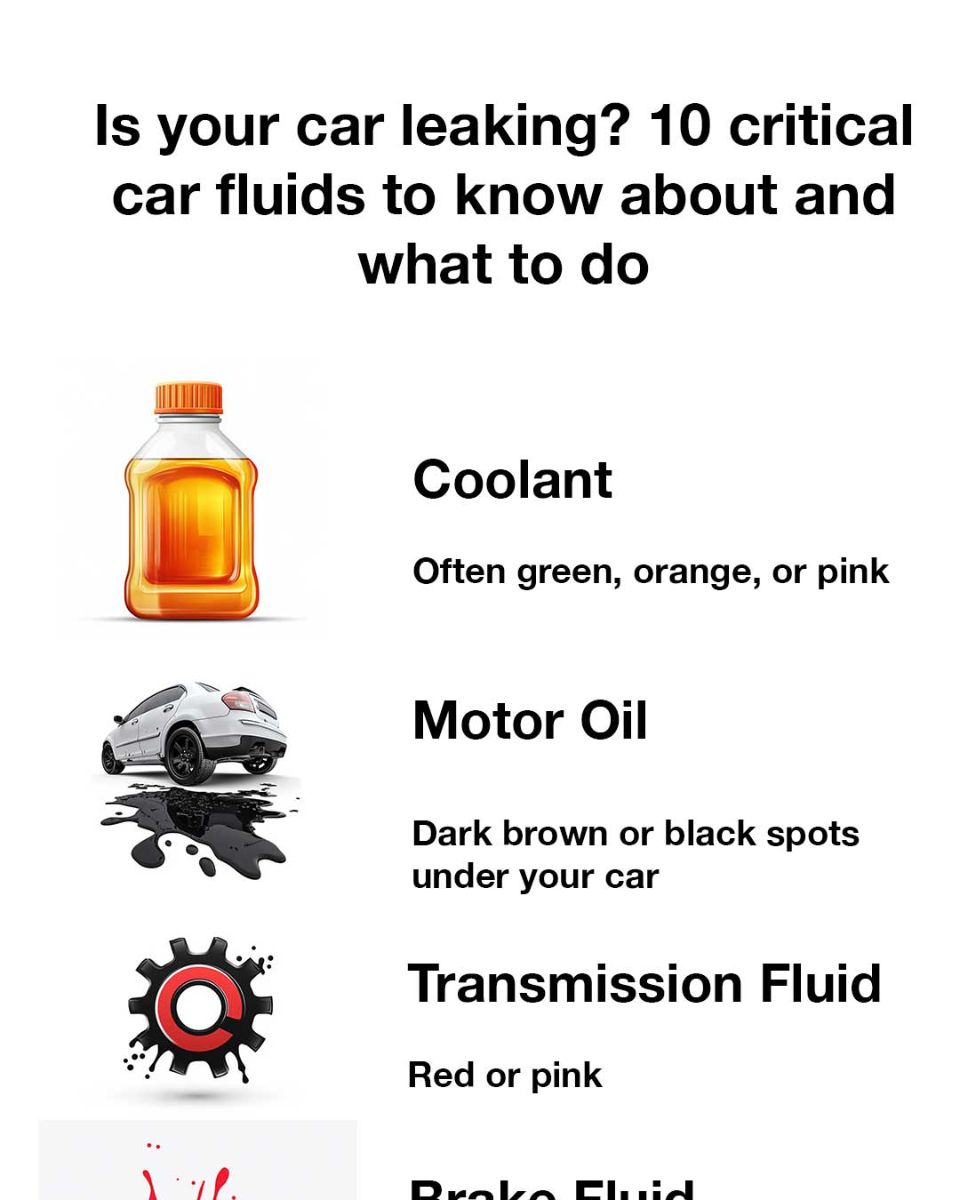Is your car leaking? 10 critical car fluids to know about and what to do in each case
McKayla Davis
Contributing Writer
Print this recipe
Car fluid leaks are a common issue that many vehicle owners encounter. These leaks can range from minor to severe, and identifying them early can prevent costly repairs and ensure your safety on the road. Fluids in your car play crucial roles, from lubrication to cooling, and any leak can compromise their function. Understanding the different types of fluids and their respective leaks can help you take appropriate action and maintain your vehicle’s performance.
Understanding the Importance of Identifying Car Fluids
Identifying car fluids is essential because each fluid serves a specific purpose, and a leak can indicate a problem in that system. For instance, a brake fluid leak can lead to brake failure, while a coolant leak can cause the engine to overheat. By recognizing the color, texture, and smell of the fluid, you can determine which system is affected and address the issue promptly. This knowledge not only helps in maintaining the vehicle but also ensures your safety and that of other road users.
1. Coolant: Recognizing the Signs and Solutions
Coolant, often green, orange, or pink, is crucial for regulating your engine’s temperature. A coolant leak might appear as a brightly colored puddle under your car. If you notice this, check the coolant reservoir and hoses for cracks or loose connections. It’s important to address coolant leaks immediately to prevent engine overheating. If you’re unsure, consult a mechanic to inspect and repair the cooling system.
2. Water: When to Worry and When It’s Normal
Water leaks are usually harmless, often resulting from condensation from the air conditioning system. This is normal and typically appears as clear water under the passenger side of the vehicle. However, if you suspect the water is from another source, such as a coolant leak, it’s important to investigate further. Ensure that the water is not mixed with other fluids, which could indicate a more serious issue.
3. Motor Oil: Identifying Leaks and Necessary Actions
Motor oil leaks are common and can be identified by dark brown or black spots under your car. These leaks often occur due to worn-out gaskets or seals. If you notice an oil leak, check the oil level and top it up if necessary. It’s crucial to have the leak repaired to prevent engine damage. Regular oil changes and inspections can help prevent leaks and maintain engine health.
4. Transmission Fluid: Spotting the Leak and Next Steps
Transmission fluid is typically red or pink and is vital for smooth gear shifts. A transmission fluid leak can lead to transmission failure if not addressed. Look for reddish puddles under the vehicle and check the fluid level using the dipstick. If you suspect a leak, have a professional inspect the transmission system, as repairs can be complex and require specialized knowledge.
5. Brake Fluid: Safety Concerns and Immediate Measures
Brake fluid leaks are serious and can compromise your vehicle’s braking ability. This fluid is usually clear to yellowish and has a slippery feel. If you notice a brake fluid leak, do not drive the vehicle. Instead, have it towed to a mechanic immediately. Regularly check the brake fluid level and inspect the brake lines for any signs of wear or damage.
6. Power Steering Fluid: Detection and Remedies

